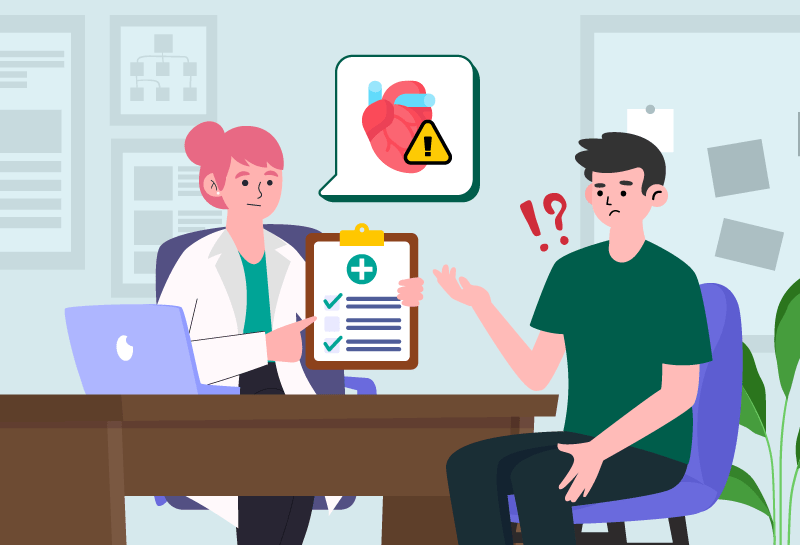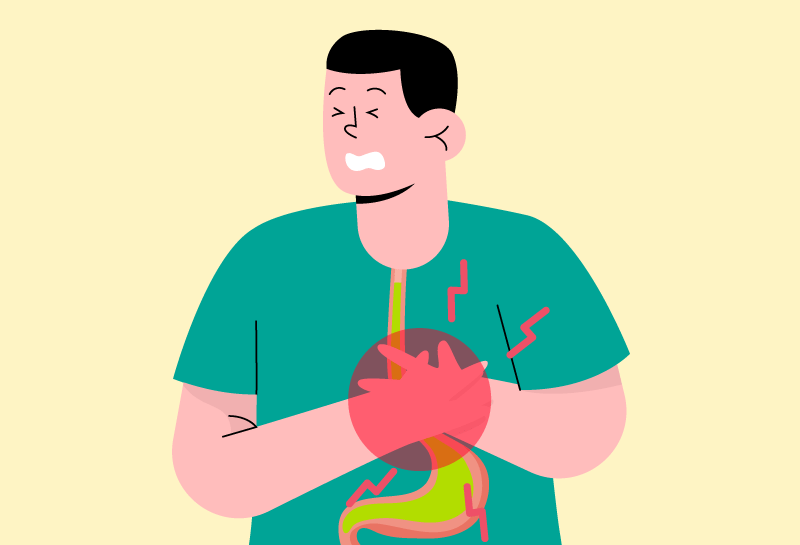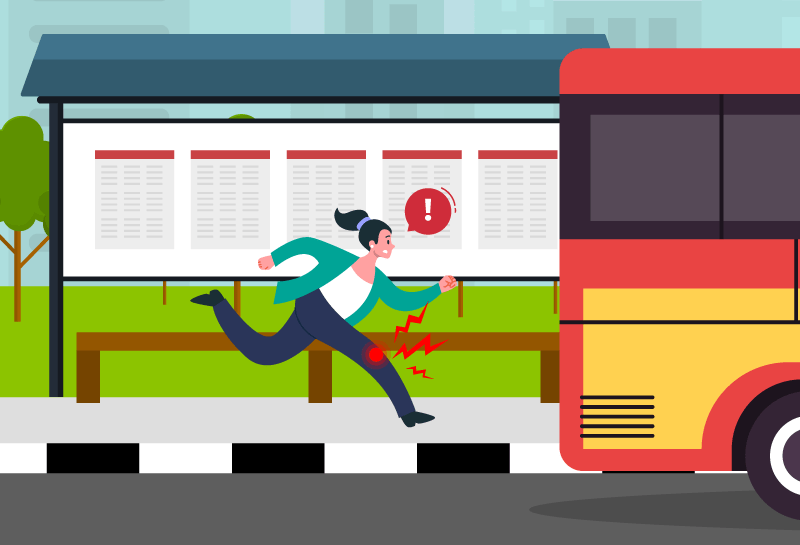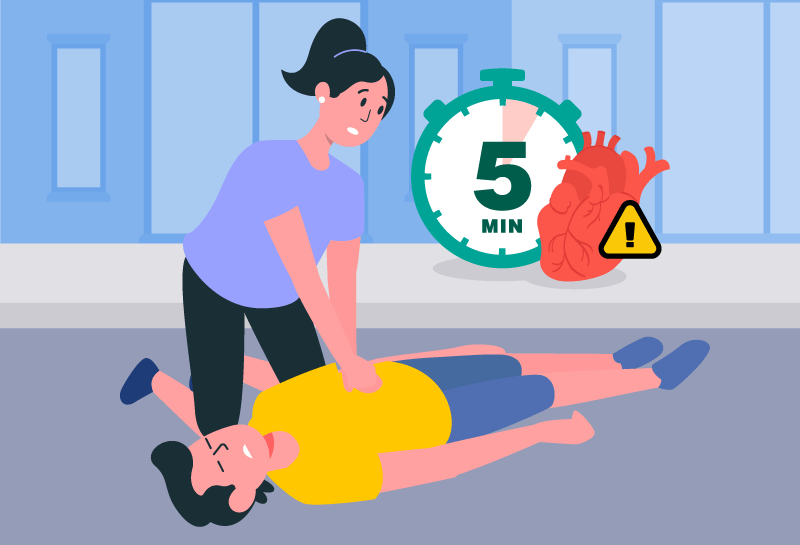A small, walnut-sized gland just below your bladder plays a vital role in urinary and sexual health. But it’s often the last thing on most men’s minds, until trouble strikes. What’s stopping men from taking action on their prostate health?
The prostate is often called the “silent organ,” because many prostate problems develop slowly, with few noticeable symptoms early on. By the time symptoms are obvious, men have already delayed seeking treatment, resulting in complications that could have been avoided. Early detection and intervention are key to preventing long-term issues. Yet, any men confuse prostate symptoms with normal ageing, putting off treatment when they should take action.

DID YOU KNOW?
There are several misconceptions about prostate health that many men have:
- Prostate problems are only a concern for older men.
- Prostate cancer is a slow-growing and not a life-threatening disease.
- Prostate cancer is always a death sentence.
- Treatment for prostate cancer inevitably leads to incontinence and impotence.
- A high PSA level always means you have prostate cancer.
Why do men delay treatment?
There are a few key reasons why men often wait too long to address prostate health issues:

Normalisation of symptoms
Men often dismiss symptoms like frequent urination or trouble with urine flow as part of the natural ageing process. It’s easy to think, “This is just what happens as I get older,” but ignoring these signs could lead to more serious health issues down the road.

Fear or discomfort
Prostate health is often seen as a sensitive or awkward topic, leading many men to avoid discussing symptoms with their doctors. This hesitation can result in delayed diagnoses and unnecessary complications.

Lack of awareness
Many men simply don’t realise how critical it is to monitor their prostate health. Without awareness of the potential risks, like prostate cancer, benign prostatic hyperplasia (BPH), or prostatitis, they may not prioritise regular check-ups.

EXPERT INSIGHT
According to Dr Liew, prostate health is often overlooked, as many men believe it’s only a concern for older generations. Embarrassment and discomfort also prevent open discussions, and there’s a general lack of awareness about prostate health and related concerns. To encourage regular screenings, Dr Liew stresses the importance of raising awareness through public health campaigns, education, and open conversations. Addressing the stigma around prostate health and encouraging discussions between men and doctors is essential to resolve any concerns.
The silent organ: Common prostate conditions
Prostate issues can affect any man, but the symptoms are often misunderstood or ignored. Here’s what you need to know about the most common prostate conditions:

Benign prostatic hyperplasia (BPH)
As men age, the prostate naturally grows. In some cases, this growth leads to BPH. While BPH is non-cancerous, the discomfort can significantly affect your quality of life.

DID YOU KNOW?
Some of the early symptoms of BPH include:
- Increased urinary frequency: Feeling the need to urinate more often, especially at night, which disrupts sleep and overall quality of life.
- Urgency: A sudden and intense urge to urinate, making it hard to hold it in.
- Weak urine stream: The flow may be weaker or may start and stop intermittently.
- Difficulty starting urination: Trouble initiating a urine stream, even when you feel the urge to go.
- Dribbling at the end of urination: Experiencing leakage or dribbling after urinating.
- Incomplete emptying: Feeling your bladder hasn’t fully emptied, even after finishing urination.
These symptoms are often subtle at first and may worsen over time, with many men attributing them to ageing. Early intervention is crucial to prevent complications.

Prostatitis
Prostatitis, is an inflammation of the prostate gland, can cause lower back pain, painful urination, and even fever. It’s often caused by an infection and can affect younger men as well. Left untreated, it can lead to chronic issues and complications.

Prostate cancer
Prostate cancer is one of the most common cancers in men. It often develops slowly with few early symptoms, making regular screenings crucial for early detection. Men with a family history of prostate cancer or other risk factors should be particularly vigilant about their prostate health.
Signs to watch for: Are you confusing symptoms with ageing?
As men age, some changes are natural. However, it’s important to understand when symptoms go beyond normal ageing and require medical attention. Here are some common signs of prostate problems that men often mistake for just getting older:

Frequent urination, especially at night

Weak or interrupted urine flow

Painful or difficult urination

Erectile dysfunction

Blood in urine or semen
When to take action: Don’t wait!
If you notice any of these symptoms or haven’t had a prostate check-up recently, it’s crucial to seek medical advice from a urologist immediately. Delaying treatment can lead to serious health consequences, particularly with prostate cancer or severe BPH. Early detection is key.

EXPERT TIP
Dr Liew recommends that men take a proactive approach to managing their prostate health at any age. Here’s how:
Men in their 20s to 40s
- Establish healthy habits: Focus on a balanced diet, regular exercise, and maintaining a healthy weight to lay foundation for long-term prostate health.
- Be aware of family history: If there’s a family history of prostate cancer, discuss your risk and when to start screening with your doctor.
- Practice safe sex: Prevent sexually transmitted infections (STIs) that could be linked to prostatitis.
Men in their 50s and older
- Follow screening guidelines: Adhere to annual prostate cancer screenings, including PSA tests and digital rectal exams (DREs).
- Monitor BPH symptoms: If you experience symptoms like increased urinary frequency or urgency, consult your doctor for early intervention.
Tests and screenings for prostate conditions
Regular screenings are essential for detecting prostate problems early. Here are the key tests for diagnosing both prostate cancer and BPH:
| Type of test/screening |
Procedure |
What it detects |
| Prostate-specific antigen (PSA) test |
The PSA test measures the level of prostate-specific antigen in the blood.
|
Elevated PSA levels may indicate prostate cancer, but they can also be raised due to conditions like BPH or prostatitis. This test is commonly used for men over 50 or those at higher risk for prostate issues.
|
| Digital rectal exam (DRE) |
During the DRE, a doctor manually examines the prostate for abnormalities in size, shape, or texture.
|
This test can help detect prostate cancer of other issues like BPH. It’s often used in combination with a PSA test for a more accurate assessment.
|
| Transrectal ultrasound (TRUS) |
A TRUS uses sound waves to create an image of the prostate.
|
It’s often used to guide a biopsy if PSA levels are elevated or if the DRE suggests abnormal findings. TRUS can provide detailed imaging to help diagnose conditions like BPH and prostate cancer.
|
| Uroflowmetry (for BPH) |
This test measures the flow rate of urine, which can help doctors evaluate the severity of BPH.
|
A slow or interrupted flow may suggest an enlarged prostate that is obstructing the urethra.
|
| Post-void residual (PVR) volume test for (BPH) |
This test measures the amount of urine left in the bladder after urination.
|
A high PVR could indicate that BPH is preventing you from fully emptying your bladder, a key symptom of the condition.
|
| Biopsy |
If there’s concern about prostate cancer, a biopsy may be performed to remove small samples of prostate tissue for testing.
|
A biopsy is the definitive way to confirm or rule out cancer.
|

EXPERT INSIGHT
Family history plays a significant role in prostate cancer risk. Men with a first-degree relative who has prostate cancer are at a higher risk. Here’s how to approach screening:
- Increased risk: Having a first-degree relative (parent, sibling, or child) with prostate cancer doubles the risk, and early diagnoses (before 60) further increase this risk.
- Genetic factors: Family history may indicate inherited mutations (BRCA1, BRCA2) that raise prostate cancer risk.
- Approach to screening: Men with a strong family history may need to start screening earlier than age 50. Consult your doctor about screening options like PSA test and DREs.
- Genetic testing: Consider genetic testing if there’s a family history of prostate or related cancers, such as breast, colon or ovarian cancer.
- Maintaining a healthy lifestyle: A balanced diet, regular exercise, and maintaining a healthy weight are key to reducing prostate cancer risk.
Lifestyle factors, such as diet and exercise, plays a crucial role in prostate health. Healthy habits can reduce the risk of prostate issues and contribute to overall wellbeing. Understanding how diet and physical activity impact prostate health can empower men to take proactive steps in maintaining their health.

EXPERT TIP
Dr Liew recommends making simple, yet impactful lifestyle changes to support prostate health. The following tips focus on diet and exercise:
Diet recommendations

Increase fruits and vegetables
A variety of colourful produce, such as tomatoes, broccoli, and leafy greens, are packed with antioxidants and essential nutrients that may help protect against cell damage and reduce the risk of prostate cancer.

Choose whole grains
Opt for whole wheat bread, brown rice, and quinoa instead of refined grains. Whole grains are rich in fibre, which helps reduce inflammation and regulate blood sugar levels, both of which are important for prostate health.

Limit red and processed meats
These foods are linked to a higher risk of prostate cancer. Choose lean cuts of meat and keep portion sizes moderate.

Reduce dairy intake
Some research suggest that high dairy consumption may be associated with higher risk of prostate cancer.

Focus on healthy fats
Use olive oil, nuts, and avocados in place of saturated fats found in processed foods and fatty meats to help reduce inflammation.
Exercise
- Aim for 30 minutes of moderate-intensity exercise on most days of the week. Activities like brisk walking, cycling, or swimming are excellent choices that support prostate health and overall wellbeing.
In addition to diet and exercise, several other lifestyle factors are crucial for maintaining prostate health:
- Maintain a healthy weight: Being overweight and obese increases the risk of prostate cancer.
- Quit smoking: Smoking is linked to an increased risk of prostate cancer, among other serious health issues.
- Manage stress: Chronic stress can weaken the immune system and potentially increase cancer risk. Engaging in stress-reducing practices like yoga, meditation, or spending time in nature can be beneficial.
Prostate health is often overlooked, but it’s vital for men of all ages. Regular screenings and awareness can make a significant difference. Don’t wait and schedule your check-up today. And just as importantly, remind the men around you to do the same. Proactive care today ensures a healthier tomorrow.
This article has been written by Healthful For You and does not represent the opinions, views, or endorsements of the Expert Contributor of this article. The Expert Contributor has solely provided expert insights, tips, and “Did You Know” information for informational purposes. Any interpretations, conclusions, or statements beyond these contributions are those of the author and do not reflect the views of the expert contributor. This content is intended for informational purposes only and should not be considered as medical, legal, or professional advice.



 Copied
Copied





















 15 mins read
15 mins read 





